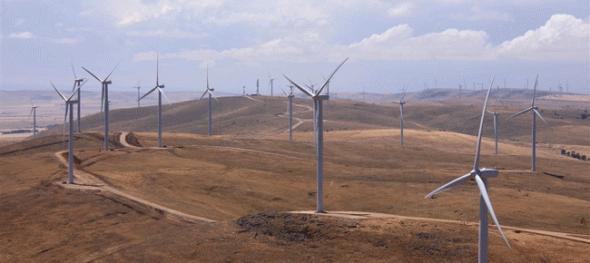The ability of New Zealand company TrustPower to land a power purchase agreement for its proposed 270MW Snowtown 2 wind project in South Australia – the first significant PPA written in this country for a new-build wind farm for several years – basically comes down to the power of its wind resource.
While most Australian wind projects would need a PPA of $100-$110 to make a decent return for investors, it is thought that the PPA for Snowtown, signed by Origin Energy, is below $95/MWh, and may be below $90/MWh.
According to a report from Deutsche Bank analysts, Snowtown 2 has a long-run marginal cost (LRMC) of around $77/MWh, courtesy of the extremely rich wind resource, which is expected to deliver a capacity factor of around 43 per cent. The first stage of the Snowtown project, a 110MW facility constructed in 2009, delivered a capacity factor of 45 per cent and had a LRMC of around $74/MWh.
The average capacity factor in Australian wind farms is around 33 per cent – a factor which, if applied to Snowtown, would push its LRMC up to around $95/MWh. Indeed, it is thought that this is around the cost of Australia’s largest wind project, the 440MW Macarthur wind farm jointly owned by AGL Energy and another New Zealand company, Meridian Energy.
For that project – which was mandated by a contract to provide clean energy to a desalination plant – to go ahead would have required a PPA of $100-$110/MWh. AGL Energy would have been prepared to pay a higher PPA than Origin Energy because it remains a half-owner in the wind farm, so can benefit from the equity returns.
TrustPower itself describes Snowtown 2 as having “one of the best sites in Australia,” and although development is contingent on it finding a partner to share the investment burden (TrustPwer has a market cap of $1.5 billion and this is a near $600 million project), Deutsche says this should not be hard.
Based on its assumptions of a LRMC of $77/MW, a PPA of $95/MW, and a short-run marginal cost of $15/MWh, it assumes that Snowtown 2 will deliver earnings before interest, tax and depreciation of $43 million, and based on debt finance at 7 per cent, a net profit of $NZ11 million.
“While it is slightly premature, the metrics appear too attractive for TrustPower not to find a way to make it work.” the report said. “A key difference between the cost metrics of Snowtown and other Australian wind farms is its capacity factor.”





